Home>diy>Home Improvement>How To Plan A Home Renovation


Home Improvement
How To Plan A Home Renovation
Modified: December 7, 2023
Learn how to plan a successful home renovation with our expert tips and advice. Transform your living space with our home improvement strategies.
(Many of the links in this article redirect to a specific reviewed product. Your purchase of these products through affiliate links helps to generate commission for Storables.com, at no extra cost. Learn more)
Introduction
Welcome to the world of home renovations! Whether you are looking to upgrade your living space, increase the value of your property, or simply give your home a fresh new look, planning a home renovation can be an exciting yet challenging endeavor.
In this article, we will guide you through the process of planning a home renovation step by step, providing you with valuable insights and expert tips along the way. From assessing your needs to hiring professionals and completing the final touches, we will cover everything you need to know to make your home renovation a success.
Renovating your home can provide numerous benefits. Not only can it enhance the functionality and aesthetics of your space, but it can also improve energy efficiency and increase the value of your property. However, it is essential to approach a home renovation project with careful planning and consideration.
Before you embark on your renovation journey, take some time to envision your dream home and set realistic goals for your project. Think about what changes you want to make, the style you wish to achieve, and how these improvements will align with your lifestyle and budget.
It’s important to note that home renovations can be a complex and time-consuming process. They often involve several stages, including design, demolition, construction, and finishing. Therefore, having a well-thought-out plan in place will help you stay organized and ensure a smooth and successful renovation.
Throughout this article, we will provide you with valuable tips and strategies to help you navigate each stage of the renovation process. From determining your needs and budget to hiring professionals, obtaining permits, and completing all the necessary tasks, we’ve got you covered.
So, without further ado, let’s dive into the exciting world of home renovations and discover how you can transform your living space into the home of your dreams!
Key Takeaways:
- Planning a home renovation involves assessing needs, setting a budget, hiring professionals, obtaining permits, and creating a timeline. Attention to detail and careful execution are crucial for a successful outcome.
- From structural changes to exterior renovations, every phase of the home renovation process requires thorough planning, expert guidance, and attention to detail. The final touches and cleanup stage are essential for showcasing the beauty of the newly renovated space.
Read more: How To Plan For Home Renovation
Assessing Your Needs
Before you begin any home renovation project, it’s crucial to assess your needs and understand what you hope to achieve with the renovation. Take a close look at the different areas of your home and consider what changes you would like to make. Do you want to update the kitchen to create a more functional space for cooking? Or perhaps you desire to expand your living room to accommodate larger gatherings?
Make a list of the specific improvements you want to make in each room. Consider both the functional and aesthetic aspects of the renovation. For example, if you are renovating your bathroom, you may want to upgrade the plumbing fixtures to improve water efficiency while also updating the tiles and fixtures for a more modern look.
Also, think about your long-term goals for the renovation. Do you plan to stay in your home for many years to come? If so, consider how your needs may change over time. For instance, if you are planning to start a family or if your children will soon be leaving the nest, you may want to factor in additional bedrooms or flexible living spaces.
Furthermore, think about your lifestyle and how the renovation can cater to your daily routine. If you love to cook, investing in high-quality appliances and creating an open kitchen layout may be a priority. If you enjoy spending time outdoors, consider incorporating a deck or patio area into your plans.
Another essential aspect to consider is your budget. Determine how much you are willing to spend on the renovation and prioritize the projects based on their importance to you. This will help you make informed decisions and ensure that you allocate your funds wisely.
Don’t forget to consider the existing architectural style and layout of your home. Ensure that the renovations blend seamlessly with the overall design and flow of your property. It’s important to create a cohesive look and feel that harmonizes with the existing structure.
Assessing your needs will help you define the scope of your home renovation project and establish a clear vision for the final result. It will also assist you in communicating your requirements to contractors and professionals who will be involved in the renovation process.
By taking the time to assess your needs thoroughly, you can ensure that your home renovation meets and exceeds your expectations, leaving you with a space that is not only beautiful but also functional and tailored to your lifestyle.
Setting a Budget
One of the most critical aspects of planning a home renovation is setting a budget. Determining how much you are willing to spend on your project will guide your decisions and help you prioritize where to allocate your funds.
Start by evaluating your financial situation and determining how much you can comfortably afford to spend on the renovation. Take into consideration your income, savings, and any other sources of funding that may be available to you. It’s important to be realistic and set a budget that aligns with your financial capabilities.
Once you have a budget in mind, make a list of all the renovation projects you want to undertake and estimate the costs associated with each one. Research and gather quotes from contractors, suppliers, and other professionals who will be involved in the renovation process. Be sure to include all material costs, labor fees, permit fees, and any additional expenses that may arise.
It’s important to keep in mind that unexpected costs can often come up during a renovation project. It’s a good idea to set aside a contingency fund of around 10-20% of your budget to account for these unforeseen expenses. Having this buffer in place will help you avoid any financial stress if unexpected issues arise during the renovation.
During the budgeting process, prioritize your renovation projects based on their importance to you. Identify the must-haves and the nice-to-haves so that you can allocate your funds accordingly. This will help you make informed decisions and ensure that you stay within your intended budget.
Consider the potential return on investment (ROI) for your renovation projects. Some renovations, such as kitchen remodels or bathroom upgrades, have a higher ROI and can increase the value of your home. It’s important to strike a balance between your personal preferences and the potential financial benefits of the renovation.
It’s also a good idea to factor in any financing options that may be available to you. If you don’t have enough cash on hand to cover the entire renovation, you may explore options such as home equity loans, lines of credit, or personal loans. Be sure to carefully consider the terms, interest rates, and repayment options before pursuing any financing routes.
Setting a budget for your home renovation will help you stay financially disciplined throughout the process. It will allow you to make informed decisions, prioritize your projects, and ensure that you allocate your funds wisely. With a well-planned budget in place, you can move forward confidently and ensure a successful and financially sustainable home renovation.
Researching and Gathering Ideas
Researching and gathering ideas is an exciting and important step in the home renovation process. It allows you to explore different styles, designs, and trends to inspire and inform your own renovation project.
Start by creating a vision board or a digital folder where you can collect images, articles, and inspiration that resonates with your desired aesthetic. Websites like Pinterest and Houzz are great resources for finding and saving design ideas. As you browse through home improvement magazines, online blogs, and social media platforms, save any images or articles that catch your eye.
Consider the architectural style of your home and the existing elements that you want to preserve or complement. Look for inspiration that aligns with the overall character of your property. Whether you prefer a contemporary, traditional, rustic, or minimalist style, there are endless possibilities to explore.
Aside from design inspiration, researching also involves gathering information about materials, finishes, and technology that can enhance the functionality and efficiency of your space. Look for eco-friendly options, energy-efficient appliances, and durable materials that will withstand the test of time.
Another valuable resource for gathering ideas is visiting showrooms, home improvement stores, and attending home renovation expos. Seeing products and materials up close can help you visualize how they will look and feel in your own space. It also gives you the opportunity to ask questions and get expert advice from knowledgeable professionals.
Don’t forget the importance of considering your lifestyle and the particular needs of your household. If you have pets or children, look for features and materials that can withstand wear and tear. If you enjoy entertaining, explore ideas for creating a functional and inviting space for hosting gatherings.
While it’s important to stay true to your own style and preferences, also keep in mind the resale value of your home. Trends come and go, so make sure your renovation choices are timeless and appealing to a broad range of potential buyers if you ever decide to sell your property.
As you gather ideas and inspiration, keep a record of your favorite concepts, materials, and designs. This will help you communicate your vision to contractors and professionals involved in the renovation process.
Remember that researching and gathering ideas is an ongoing process. Take your time to explore and refine your vision before finalizing your renovation plans. With a well-researched and inspired vision, you can create a space that reflects your personal style and meets your practical needs.
Hiring Professionals
When it comes to a home renovation, hiring professionals is a crucial step to ensure that the project is executed successfully and meets your expectations. Whether you need an architect, a contractor, an interior designer, or specialized tradespeople, finding the right professionals for the job is essential.
Start by asking for recommendations from friends, family, and neighbors who have recently completed renovations. Their first-hand experiences and referrals can provide valuable insights into the quality of work and professionalism of different professionals. Additionally, researching online reviews and checking professional associations can help you find reputable contractors and designers in your area.
Take the time to interview multiple professionals to gauge their expertise, communication skills, and compatibility with your vision. During the interviews, ask for portfolios or examples of previous work, references from past clients, and any certifications or licenses they may hold.
When hiring a contractor, ensure that they have the proper licenses and insurance coverage to protect both you and them during the renovation process. Request a detailed written contract that outlines the scope of work, project timeline, payment terms, and any warranties or guarantees provided.
Similarly, if you are working with an interior designer or architect, make sure they understand your vision and are receptive to your input. Clear and open communication is key to a successful collaboration throughout the renovation process.
Avoid making hasty decisions solely based on price. While budget is an important factor, it’s equally important to consider the expertise and competency of the professionals you are hiring. Remember, a well-executed renovation can add significant value to your property, so investing in the right professionals is crucial.
Once you have selected your professionals, ensure that you have open lines of communication with them throughout the renovation. Regular site visits and progress updates will keep you informed and allow you to address any concerns or changes that may arise.
Lastly, be respectful of the professionals’ expertise and trust their advice. They bring valuable knowledge and experience to the table, and their insights can help you make informed decisions during the renovation process.
Hiring professionals ensures that your home renovation is handled by experts who have the necessary skills and experience. Their expertise will streamline the process, minimize mistakes, and deliver a high-quality end result that aligns with your vision. Collaborating with professionals will give you peace of mind and help turn your dream renovation into a reality.
Obtaining Permits and Permissions
Before you can commence with your home renovation, it’s important to understand and comply with the necessary permits and permissions required by your local authorities. Obtaining the proper permits ensures that your renovation meets building codes and regulations, ensuring safety and adherence to legal requirements.
The specific permits and permissions you will need depend on the scope and nature of your renovation project. Common permits include building permits, electrical permits, plumbing permits, and zoning permits. Research your local building department’s requirements or consult with a professional who can guide you through the process.
Start by identifying the permits and permissions needed for your particular renovation project. This may involve submitting architectural plans, engineer’s reports, and other documentation that outlines the proposed changes to your property.
Reach out to your local building department to understand the application process, required documents, and any associated fees. It’s essential to start this process well in advance as obtaining the necessary permits can take time depending on your location.
Engaging professionals such as architects, contractors, or specialized consultants can streamline the process as they are familiar with the permit requirements and can assist with the application process. They can help ensure that the necessary documents and plans are prepared accurately and meet all the relevant regulations.
Nonetheless, it’s important for homeowners to familiarize themselves with the permitting process. Educate yourself on the local building codes and regulations to ensure compliance with safety standards and other regulations specific to your area.
Keep in mind that non-compliance with permit requirements can result in costly penalties, delay the renovation process, or even lead to project shutdowns. It’s crucial to adhere to all applicable regulations and obtain the required permits before starting any construction work.
Once you have obtained the necessary permits and permissions, keep a copy of all documents and approvals for reference. Display the permits prominently at the job site as required by local regulations.
Remember, maintaining open lines of communication with your local building department throughout the renovation process is essential. They are there to provide guidance and ensure that your project meets the necessary standards and regulations.
Obtaining permits and permissions may add an extra step to the renovation process, but it is a crucial one. By doing so, you can ensure the safety, legality, and long-term success of your home renovation.
Creating a Timeline
Creating a timeline is a crucial step in planning a home renovation. It helps you stay organized, set realistic expectations, and ensure that the project progresses smoothly and on schedule. A well-planned timeline helps you manage resources, coordinate with professionals, and avoid unnecessary delays or disruptions.
Start by breaking down your renovation project into smaller tasks or milestones. Divide the project into phases, such as demolition, construction, electrical work, plumbing, and finishing touches. Assign estimated durations to each task based on the complexity and scale of the work involved.
Consider any time constraints or specific deadlines you may have. For example, if you have an upcoming event or a move-in date, factor that into your timeline to ensure the renovation is completed in time.
Once you have a list of tasks and estimated durations, create a Gantt chart or a project management tool that visually represents the timeline. This will help you visualize dependencies between tasks and identify any potential scheduling conflicts.
When setting your timeline, it’s important to be realistic about the time required for each task. Consult with professionals, such as contractors or designers, to get their input on the estimated durations. They can provide insights into the typical timeframes for specific tasks based on their experience.
Account for potential delays or unforeseen circumstances that may arise during the renovation process. Adding a buffer of extra time to your timeline can help accommodate unexpected issues or changes that may impact the schedule.
Communication is key during the renovation process. Regularly check in with your professionals to ensure that work is progressing according to the timeline. Address any concerns or delays promptly to minimize the impact on the overall schedule.
Keep a record of the actual time taken for each task, and compare it to the estimated durations in your timeline. This will help you refine your planning for future renovation projects and identify any areas for improvement.
Remember that unexpected changes or modifications to your original plan may impact the timeline. Be flexible and adapt as needed while keeping the overall project objectives in mind.
Throughout the renovation process, be mindful of the well-being of everyone involved, including contractors, workers, and yourself. Avoid rushing and compromising quality for the sake of sticking to a tight timeline.
A well-crafted timeline is a valuable tool in ensuring the success of your home renovation. It keeps you organized, allows for efficient resource management, and keeps the project on track. By planning and managing your renovation according to a timeline, you can navigate the process smoothly, minimize delays, and achieve your desired results within the expected timeframe.
Demolition and Prep Work
Demolition and prep work are the initial steps in a home renovation project, setting the stage for the transformation of your space. This phase involves clearing and removing existing structures and preparing the area for the construction and remodeling work to come.
Firstly, it’s crucial to ensure the safety of everyone involved in the demolition process. If you are not experienced or comfortable with handling demolition tasks, it is highly recommended to hire professionals who have the expertise and proper equipment for the job.
Start by disconnecting and shutting off any utilities, such as electricity, gas, and water, in the area that will undergo demolition. This step is essential to prevent accidents and ensure a safe working environment.
Next, carefully remove any furniture, fixtures, and belongings from the space to be renovated. It’s essential to protect these items during the demolition process to avoid damage. Store them in a safe and secure area until they can be brought back into the renovated space.
When it comes to actual demolition, proceed according to your renovation plans and the scope of work. Depending on the nature of your project, this may involve removing walls, flooring, cabinets, appliances, or other elements that are being replaced or modified.
Consider hiring professionals for structural alterations or when dealing with load-bearing walls or other elements that require expertise to ensure proper structural integrity. Always obtain the necessary permits and consult with professionals to ensure that the demolition work is safe and compliant with building codes.
During the demolition process, it’s important to have proper waste disposal strategies in place. Separate and dispose of materials responsibly, recycling whenever possible. Check local regulations and guidelines for proper disposal methods, including any hazardous materials or substances.
After the demolition is complete, it’s time to prepare the space for the upcoming construction phase. This may involve removing debris, cleaning the area, and ensuring a clean and smooth surface for the next steps.
Inspect the space for any underlying issues, such as water damage or structural concerns, that may need to be addressed before proceeding. It’s better to resolve these issues early on rather than encountering problems during the construction phase.
Additionally, consider any necessary upgrades or improvements to the electrical, plumbing, or HVAC systems. This is the ideal time to update outdated systems or make any necessary repairs or modifications.
As you move through the demolition and prep work phase, maintain open lines of communication with your contractor or professionals involved in the renovation. Regularly consult with them to ensure that the process is going as planned and address any concerns or adjustments that may be needed.
The demolition and prep work phase sets the foundation for a successful renovation project. By approaching this phase cautiously, you can ensure the safety of everyone involved, properly prepare the area for construction, and pave the way for the exciting changes to come in your home.
Before starting a home renovation, create a detailed budget and timeline to keep the project on track and avoid overspending. Researching and hiring reputable contractors is also crucial for a successful renovation.
Structural Changes
Structural changes are a significant part of many home renovation projects, as they involve modifying or altering the existing framework of your space. These changes can have a dramatic impact on the functionality, layout, and overall aesthetic of your home. However, it’s important to approach structural changes with careful planning and the expertise of professionals to ensure safety and structural integrity.
Before proceeding with any structural changes, consult with an architect or structural engineer to assess the feasibility of your ideas and determine the proper course of action. They will evaluate the existing structure and provide guidance on the best approach to achieve your desired outcome.
Common types of structural changes include removing or adding walls, adding or extending rooms, raising ceilings, or creating open floor plans. These changes require careful consideration of load-bearing walls, foundation and support systems, and the overall stability of the structure.
It’s crucial to obtain the necessary permits and approvals from local building authorities before making any major structural alterations. Compliance with building codes and regulations is essential to ensure safety and avoid potential legal issues.
During the construction phase, work with experienced contractors or builders who specialize in structural changes. They will have the knowledge and expertise to carry out the necessary tasks efficiently and in accordance with industry standards.
Be prepared for potential challenges that may arise during structural changes. Hidden obstacles, such as electrical or plumbing lines, may need to be rerouted or modified to accommodate the new design. Additional reinforcement or support may also be required to maintain structural integrity.
While structural changes can be costly and time-consuming, they have the potential to greatly transform your living space. Whether you’re creating an open concept layout, adding an extension to your home, or repurposing rooms for a different use, these changes can enhance functionality, improve flow, and increase the value of your property.
As with any renovation project, clear communication with your contractor or professionals involved is vital. Regularly checking in and addressing any concerns or questions will ensure that the structural changes align with your vision and goals for the renovation.
Structural changes require careful planning, expert guidance, and adherence to building regulations. With the right professionals and a well-thought-out plan, you can confidently proceed with structural changes that will transform your home into the space you’ve always envisioned.
Electrical and Plumbing
Electrical and plumbing work are essential components of any home renovation project. These systems are crucial for the functioning and safety of your home, and any changes or upgrades must be tackled with precision and expertise.
When it comes to electrical work, it is highly recommended to hire a licensed electrician. They will ensure that the wiring, outlets, switches, and fixtures are installed correctly and in compliance with building codes. Electrical work may include adding new outlets, relocating light fixtures, installing additional circuits, or upgrading the electrical panel to accommodate increased power demand.
Prior to the renovation, assess the electrical needs of your space and identify any improvements or enhancements that may be required. Consider factors such as lighting, power outlets, and any specialized electrical needs, such as home automation or audiovisual systems.
Plumbing work involves the installation, repair, or modification of water supply lines, drainage systems, and fixtures. Hiring a licensed plumber is essential to ensure that the plumbing work is done correctly and meets plumbing codes and standards.
Before starting any plumbing work, consider your specific renovation goals. Determine if you need to add or relocate fixtures, change the layout of existing plumbing lines, upgrade water heaters or water filtration systems, or address any plumbing issues that may have been identified earlier.
Work closely with your plumber to create a plumbing plan that meets your needs and adheres to building regulations. This plan should include the placement of fixtures, drainage system layout, and considerations for water pressure, ventilation, and water conservation.
Consulting with professionals for both electrical and plumbing work ensures that your home renovation is carried out safely and efficiently. They have the expertise to navigate any complexities and will ensure that the work meets all necessary standards and regulations.
Throughout the renovation, consider the long-term maintenance and energy efficiency of your electrical and plumbing systems. Opt for energy-efficient fixtures, LED lighting, and water-saving fixtures to reduce utility costs and minimize your carbon footprint.
While electrical and plumbing work are essential aspects of a renovation project, they can also be disruptive to your daily life. Plan accordingly and consider alternate arrangements for water and electricity if necessary.
Lastly, remember to obtain any required permits and approvals for electrical and plumbing work. Compliance with local building codes is crucial to ensure the safety of your home and the people living in it.
Electrical and plumbing work may not be the most glamorous aspect of a home renovation, but they are crucial for the functionality and comfort of your space. By consulting with professionals, adhering to regulations, and considering long-term efficiency, you can ensure that the electrical and plumbing aspects of your renovation are done with the utmost care and expertise.
Flooring and Wall Treatments
Flooring and wall treatments play a significant role in the overall aesthetics and functionality of your home. Choosing the right materials and finishes can transform your space, creating a harmonious and inviting atmosphere. Whether you’re upgrading existing features or starting from scratch, there are numerous options to consider for your flooring and walls.
When it comes to flooring, evaluate the different options available based on your budget, style preferences, and practical needs. Hardwood flooring is a timeless choice that adds warmth and elegance to any space, while engineered wood offers durability and versatility. Laminate flooring and luxury vinyl plank can provide a cost-effective alternative with a wide range of designs to choose from.
If you prefer the softness and comfort of carpet, consider high-quality options that are stain-resistant and offer good durability. Alternatively, tile and stone flooring are excellent choices for high-traffic areas or areas prone to moisture, such as bathrooms and kitchens. These options are durable and easy to maintain. Cork and bamboo flooring are eco-friendly options that offer natural beauty and sustainability.
In terms of wall treatments, paint is one of the most popular and cost-effective options. Choose suitable colors and finishes that reflect your desired style and complement your furniture and decor. Consider using neutral shades for versatility or bold accent walls to create focal points and add visual interest.
Textured wall finishes, such as wallpaper, wood paneling, or textured paint, can add depth and character to your walls. Wallpaper comes in a variety of patterns, designs, and textures and can be used to create stunning feature walls or add a touch of elegance to any room.
If you prefer a more minimalistic or contemporary style, consider using wall panels or tiles made of materials such as glass, metal, or textured ceramic. These options can add a modern and unique touch to your space.
When choosing flooring and wall treatments, consider the functionality and durability of the materials. For high-traffic areas or households with children or pets, opt for materials that are scratch-resistant, easy to clean, and can withstand wear and tear.
Plan your flooring and wall treatments in coordination with other design elements in your space. Consider how the texture, color, and pattern of the flooring and walls interact with your furniture, lighting, and decor. Create a cohesive and balanced look by ensuring that these elements complement each other.
During the installation process, work with experienced professionals to ensure a smooth and precise installation. Proper installation is essential for the longevity and appearance of your flooring and wall treatments.
Remember, flooring and wall treatments are long-term investments in your home. Take your time to research and explore different options, and consider consulting with a design professional to help you make informed decisions that align with your style and needs.
By carefully selecting the right flooring and wall treatments, you can create a space that reflects your personal taste, enhances the functionality of your home, and brings joy to all who enter.
Painting and Finishing
Painting and finishing are the final touches that bring your home renovation project to life. The right colors, textures, and finishes can create a cohesive and polished look while enhancing the overall aesthetics of your space. Whether you’re updating existing walls or adding a fresh coat of paint to new surfaces, careful planning and attention to detail are essential for a successful outcome.
Start by considering the mood and ambiance you want to create in each room. Different colors have the power to evoke specific emotions and set the tone for the space. Cool tones like blues and greens can create a calming atmosphere, while warm tones like yellows and oranges can promote a sense of energy and warmth.
Consider the natural lighting in each room when choosing paint colors. Rooms with ample natural light can benefit from lighter shades to create an airy and spacious feel, while rooms with limited natural light may benefit from warmer or brighter shades to add vibrancy.
Experiment with different finishes to add depth and visual interest to your walls. Matte finishes offer a smooth and velvety appearance, while eggshell finishes provide a slight sheen and are more resistant to stains. Satin and semi-gloss finishes offer a higher level of sheen and are easier to clean, making them suitable for high-traffic areas or areas prone to moisture, such as kitchens and bathrooms.
Consider adding decorative finishes, such as textured paints or faux finishes, to create unique visual effects. Techniques like sponging, ragging, or stenciling can add depth and dimension to your walls, making them an eye-catching feature.
When it comes to finishing touches, pay attention to details such as trim, moldings, and baseboards. Painting these elements in a contrasting color or a complementary shade can add elegance and provide a finished look to your space.
Don’t forget to consider the ceilings as well. While white is a common choice for ceilings, you can also experiment with different colors or finishes to create a unique and appealing look. Darker ceilings can create a cozy and intimate atmosphere, while lighter colors can make a room feel more spacious.
During the painting process, ensure that proper surface preparation is done. This includes cleaning the walls, repairing any imperfections or damages, applying primer where necessary, and using high-quality paint and tools for a smooth and even finish.
Work with experienced painters or take the time to learn proper painting techniques to achieve professional-looking results. Take care to protect furniture, floors, and other surfaces from paint splatters or spills by using drop cloths or masking tape.
Lastly, consider the environmental impact of the paint you choose. Opt for low or zero VOC (volatile organic compounds) paints, which release fewer harmful chemicals into the air and are safer for both you and the environment.
Finishing touches such as painting can truly transform your home renovation project. By paying attention to color choices, finishes, and details, you can create a space that reflects your personal style, enhances the overall aesthetics, and leaves a lasting impression.
Installing Fixtures and Appliances
Installing fixtures and appliances is an exciting stage of the home renovation process. It’s the moment when your vision starts to come together, and your space begins to take shape. Proper installation of fixtures and appliances is crucial to ensure functionality, efficiency, and safety in your home.
Start by carefully selecting the fixtures and appliances that align with your design aesthetic and meet your practical needs. Consider factors such as style, size, energy efficiency, and compatibility with your existing plumbing or electrical systems.
When it comes to fixtures, this includes items such as faucets, sinks, showerheads, lighting fixtures, and cabinet hardware. Select finishes and styles that complement your overall design concept and bring cohesiveness to your space. Ensure that you follow the manufacturer’s instructions for installation or hire a professional to guarantee a proper and secure installation.
Appliances are an integral part of any functioning home. When installing appliances such as refrigerators, dishwashers, ovens, or washing machines, it’s essential to follow the manufacturer’s guidelines and consult with professionals if necessary. Some appliances require specific electrical or plumbing connections, and professional installation may be necessary to ensure safety and warranty compliance.
Coordinate with your contractor or professionals to ensure that the necessary electrical and plumbing connections are in place to accommodate the fixtures and appliances you have chosen. Unless you have the expertise, it’s advisable to hire licensed professionals to handle any electrical or plumbing work to guarantee compliance with safety standards.
During the installation process, ensure that all fixtures and appliances are properly aligned, secured, and function as intended. Test each item to ensure that it operates correctly and address any issues immediately to avoid future complications.
Proper installation of fixtures and appliances not only ensures their functionality but also contributes to the overall aesthetics of your space. Attention to detail is key, so consider elements such as proper placement, levelness, and coordination with other design features in the room.
Remember to prioritize safety during the installation process. Follow safety guidelines, such as shutting off electrical circuits or valves when necessary and using personal protective equipment as advised.
Once all fixtures and appliances are installed, take the time to familiarize yourself with their operation and maintenance requirements. Read the manufacturers’ manuals and follow their recommendations to ensure longevity and optimal performance.
Lastly, don’t forget the final touches! The proper installation of fixtures and appliances should be accompanied by any necessary finishing touches, such as caulking around faucets and sinks or adding trim to enhance the overall look and functionality of the space.
Installing fixtures and appliances is a rewarding step in the home renovation journey. By carefully selecting, coordinating, and properly installing these elements, you can create a beautiful and well-functioning space that enhances your daily living experience.
Read more: How To Fix Squeaky Floors
Exterior Renovations
Exterior renovations are an excellent way to enhance the curb appeal, functionality, and value of your home. Whether you’re looking to update the façade, improve the landscaping, or make practical changes to your outdoor spaces, exterior renovations can transform the look and feel of your property.
Start by assessing the condition and appearance of your home’s exterior. Look for any areas that may need repair, such as damaged siding, windows, or roofing. Addressing these issues early on will prevent further damage and ensure a solid foundation for your renovation.
Consider the architectural style of your home and its surroundings when planning your exterior renovations. You want to make sure that any changes or updates complement the existing aesthetics and blend harmoniously with the neighborhood.
Popular exterior renovation projects include painting, replacing or updating siding, installing new windows and doors, and refreshing landscaping. These improvements can significantly enhance the overall look of your home and increase its curb appeal.
When choosing exterior materials, opt for high-quality options that are durable and weather-resistant. For instance, fiber cement siding is an excellent choice for its longevity and resistance to harsh weather conditions. Vinyl siding is another low-maintenance and cost-effective option that comes in various colors and finishes.
Consider adding or updating outdoor living spaces such as patios, decks, or porches. These areas provide additional living and entertaining space, improving the functionality and value of your home. Choose materials that are suitable for outdoor use and complement the overall design aesthetic.
Address the landscaping to create a harmonious and inviting exterior. This may involve adding new plants, trees, or shrubs, and creating defined pathways or garden beds. Consider the maintenance requirements of the landscaping and choose plants that thrive in your regional climate.
Outdoor lighting is also an important aspect of exterior renovations. Well-placed lighting can enhance the ambiance, highlight architectural features, and improve safety and security around your property. Consider a combination of lighting options, such as pathway lights, landscape spotlights, and porch or patio lighting.
Depending on your budget and goals, you may also explore energy-efficient upgrades such as installing solar panels or creating a rainwater harvesting system. These additions can provide long-term cost savings while reducing your environmental impact.
Keep in mind that exterior renovations may require permits and approvals from local authorities. Check with your local building department to ensure compliance with regulations and to obtain the necessary permissions before starting any construction work.
Lastly, always prioritize safety during exterior renovations. Whether you’re working on heights, using power tools, or working with electrical or plumbing systems, take the necessary precautions to protect yourself and others.
Exterior renovations have the power to enhance your home’s curb appeal, increase its value, and create a welcoming first impression. By carefully planning, selecting durable materials, and paying attention to details, you can transform the exterior of your home and create an inviting and beautiful space that you can be proud of.
Final Touches and Cleanup
The final touches and cleanup stage of a home renovation project are essential for adding those finishing details that bring your vision to life and ensure a polished result. This phase involves carefully inspecting the completed work, making any necessary adjustments, and tidying up the space to showcase the beauty of your renovation.
Start by conducting a thorough inspection of the renovated areas. Check for any imperfections, such as paint drips, uneven surfaces, or loose fixtures. Make a list of any touch-ups or adjustments that need to be made to ensure that everything meets your expectations.
Address any outstanding issues promptly to ensure the quality and durability of your renovation. Touch up any areas that require additional paint or stain, tighten loose screws or fittings, and resolve any functional concerns that may have arisen during the construction process.
Cleanliness is paramount in achieving a professional and visually appealing result. Begin by removing any construction debris, tools, or materials from the renovation area. Sweep or vacuum the floors, and wipe down surfaces to remove dust and dirt.
Pay attention to hard-to-reach areas, such as corners, crevices, and trim, ensuring that they are free from dust and grime. Use appropriate cleaning products and tools suitable for the various surfaces to avoid damaging the finishes.
Inspect any new fixtures or appliances that were installed during the renovation. Clean them thoroughly, following the manufacturer’s instructions, to remove any residue or fingerprints, and test their functionality to ensure they are operating correctly.
Do a final walkthrough of your entire home to ensure that all areas affected by the renovation have been cleaned and restored. Inspect adjacent spaces for any dust or debris that may have migrated during the construction process.
Pay attention to detail and consider the overall aesthetics of your space. Arrange furniture, artwork, and decor to create a cohesive and inviting atmosphere. Adding personal touches, such as plants, artwork, or accessories, can enhance the warmth and personality of your renovated space.
Consider professional cleaning services, especially for materials and surfaces that require specialized care, such as carpets, upholstery, or delicate finishes. This can help ensure a thorough and deep cleaning that leaves your space looking its best.
Lastly, take the time to celebrate and appreciate the fruits of your renovation efforts. Invite friends and family over to share in the joy of your transformed home. Enjoy the new spaces, features, and ambiance that your renovation has created.
Completing the final touches and cleanup stage allows you to showcase your home in its best possible light. By ensuring a clean and well-maintained space, you can fully appreciate the results of your hard work and enjoy the many benefits that come with a successful home renovation.
Conclusion
Congratulations on completing your home renovation journey! You have successfully transformed your living space into the home of your dreams. This comprehensive and engaging process has allowed you to assess your needs, set a budget, gather ideas, hire professionals, obtain permits, create a timeline, tackle demolition and prep work, make structural changes, address electrical and plumbing needs, install fixtures and appliances, upgrade flooring and wall treatments, renovate the exterior, and add those final touches and clean up to showcase the beauty of your newly renovated home.
Through careful planning, research, and collaboration with professionals, you have created a space that not only fits your lifestyle but also brings joy and comfort to you and your loved ones. Your home is now a reflection of your unique tastes, preferences, and functional requirements.
Remember, a successful home renovation is an ongoing journey. Your home will continue to evolve and adapt as your needs change over time. As you settle into your newly renovated space, take the time to enjoy and appreciate the transformation you have achieved.
Additionally, it’s important to prioritize regular maintenance to ensure the longevity of your renovations. Stay proactive in addressing any small repairs or upkeep needs that arise to prevent bigger issues down the road.
Lastly, don’t forget to share your renovation experience with others. Your insights and knowledge gained throughout this journey can inspire and assist others who are considering embarking on their own home renovation projects.
Thank you for joining us on this home renovation adventure. We hope that the comprehensive and engaging information provided in this article has empowered and guided you through every step of the process. May your newly renovated home bring you happiness, functionality, and beautiful memories for years to come.
Frequently Asked Questions about How To Plan A Home Renovation
Was this page helpful?
At Storables.com, we guarantee accurate and reliable information. Our content, validated by Expert Board Contributors, is crafted following stringent Editorial Policies. We're committed to providing you with well-researched, expert-backed insights for all your informational needs.
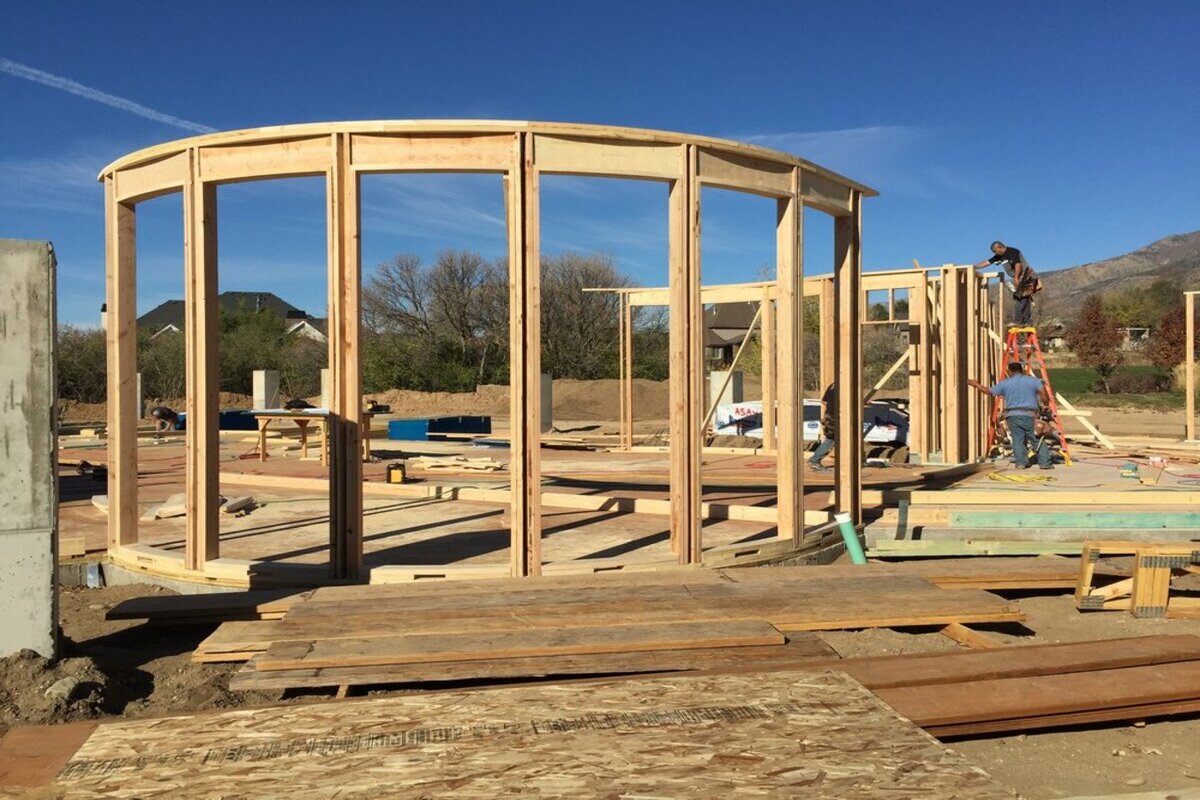

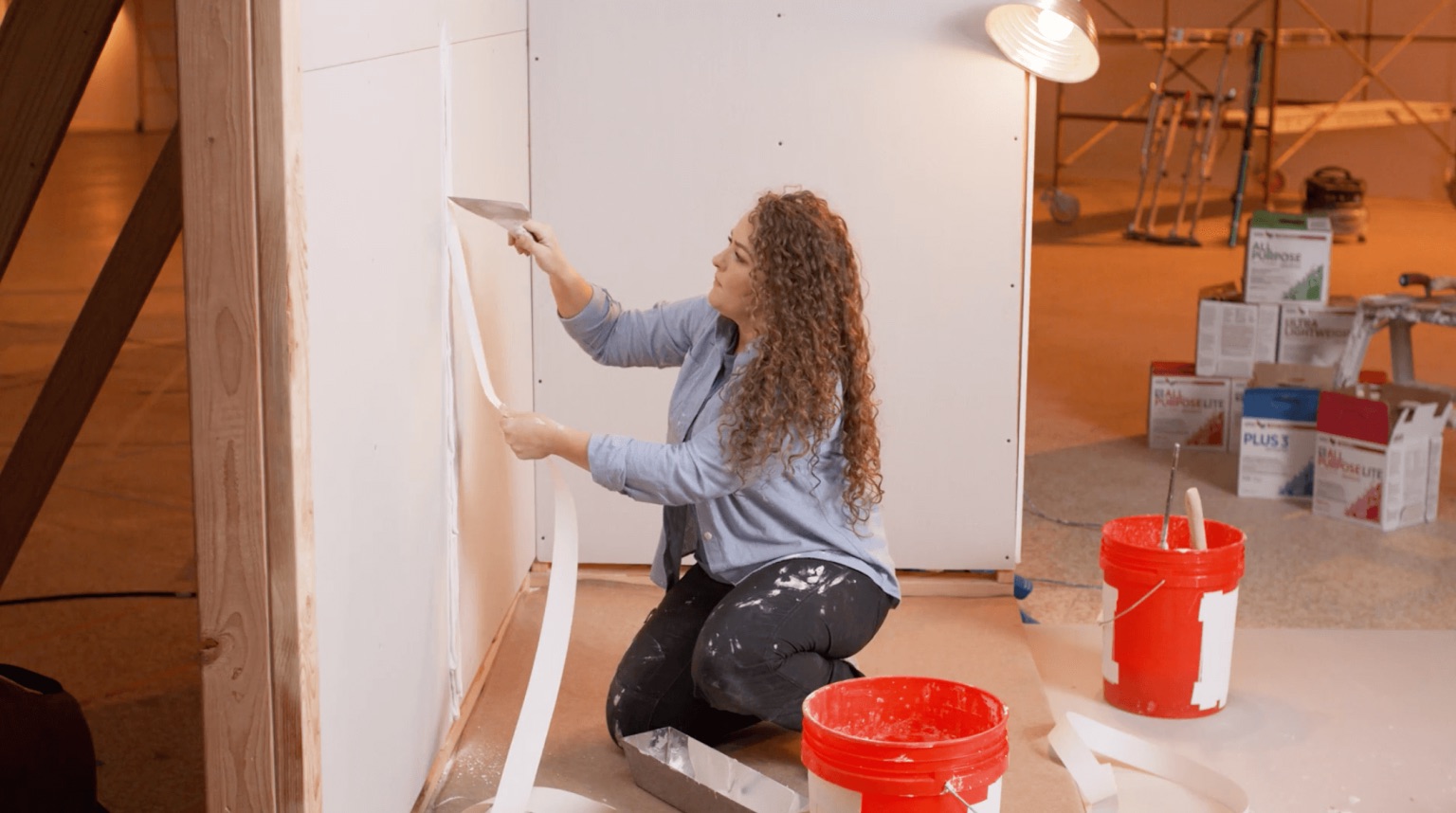
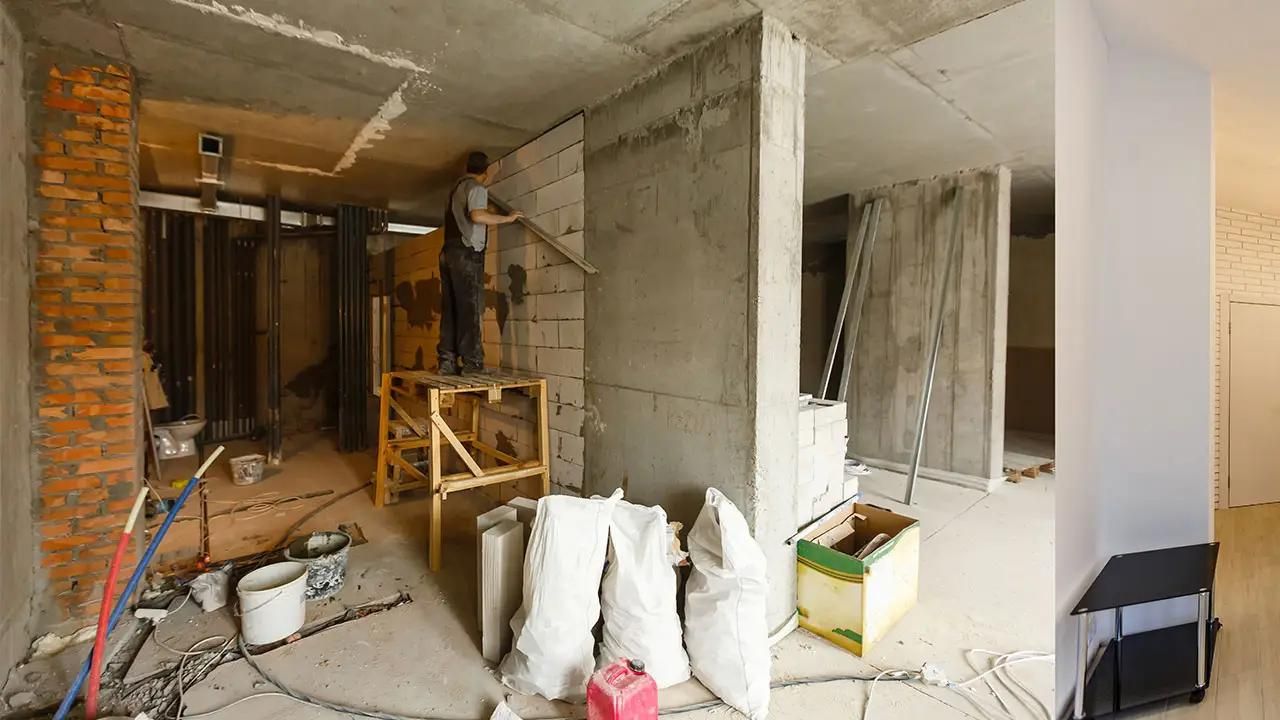
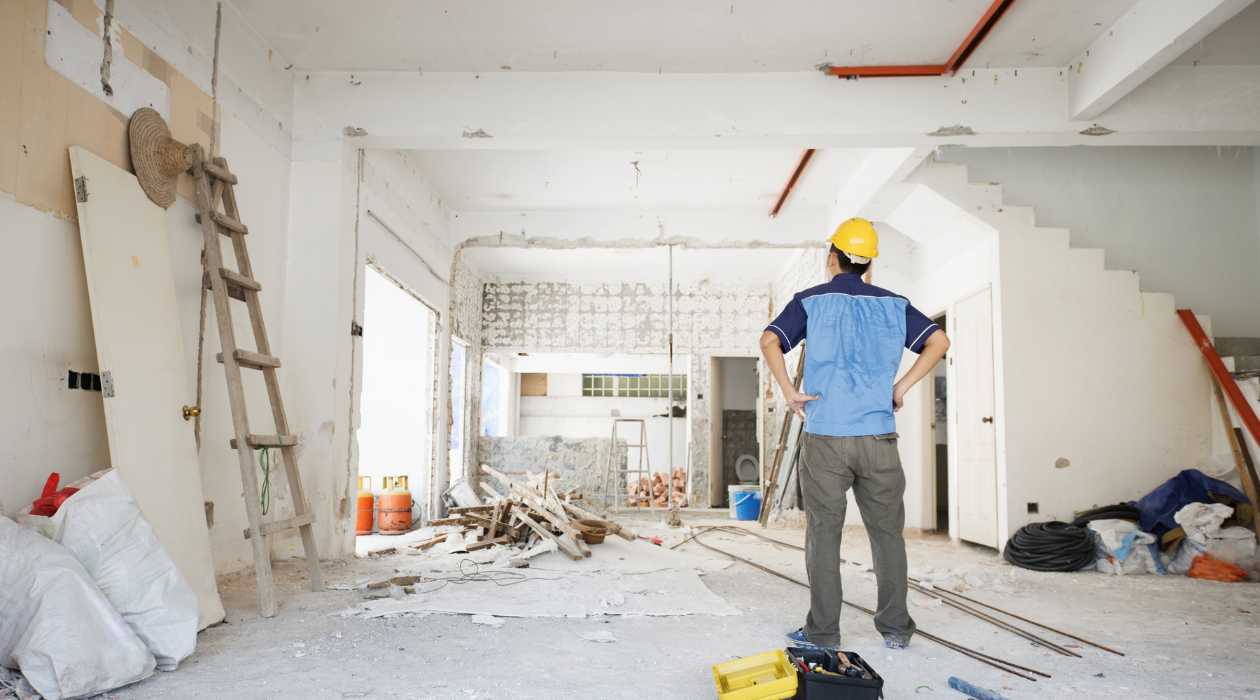

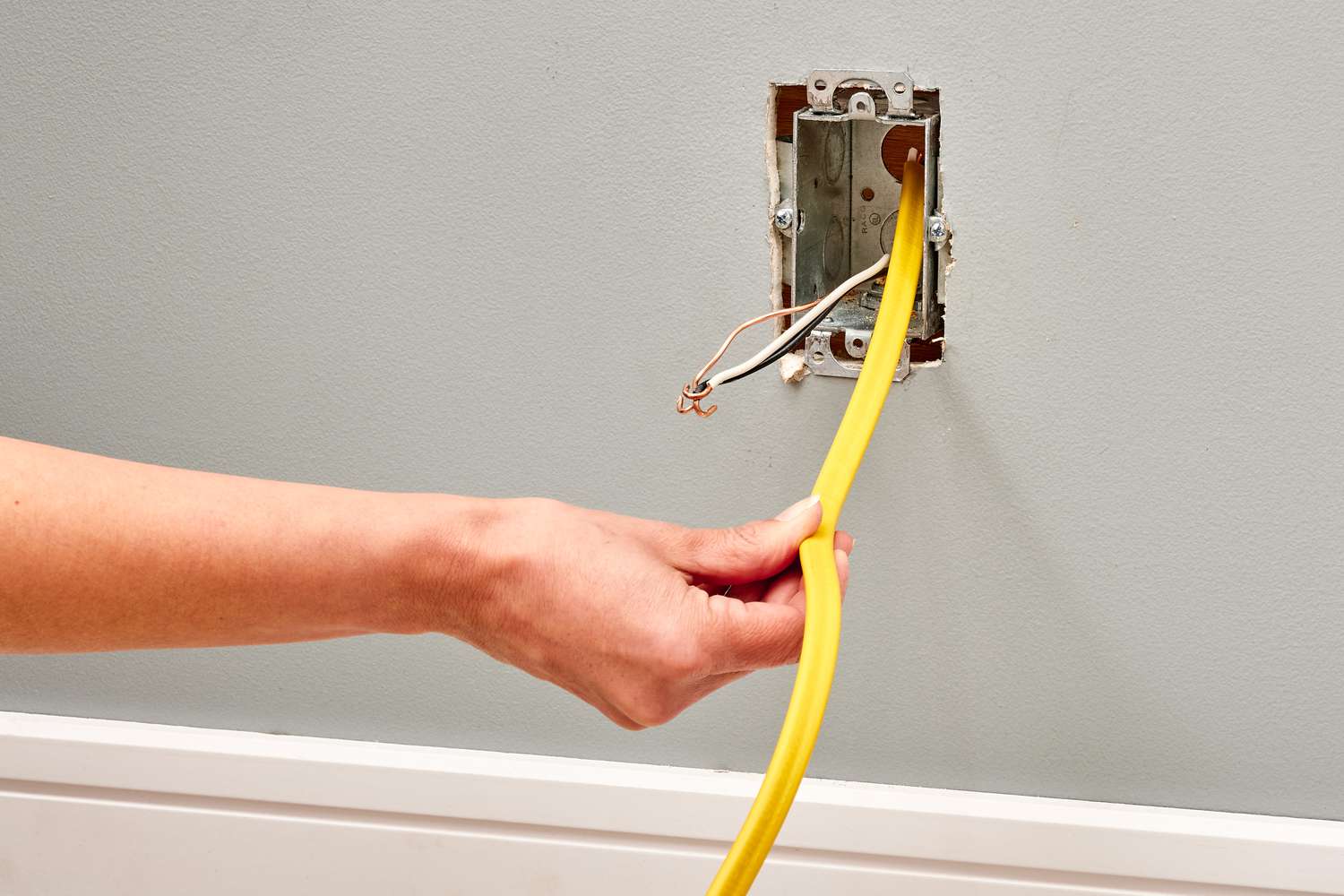



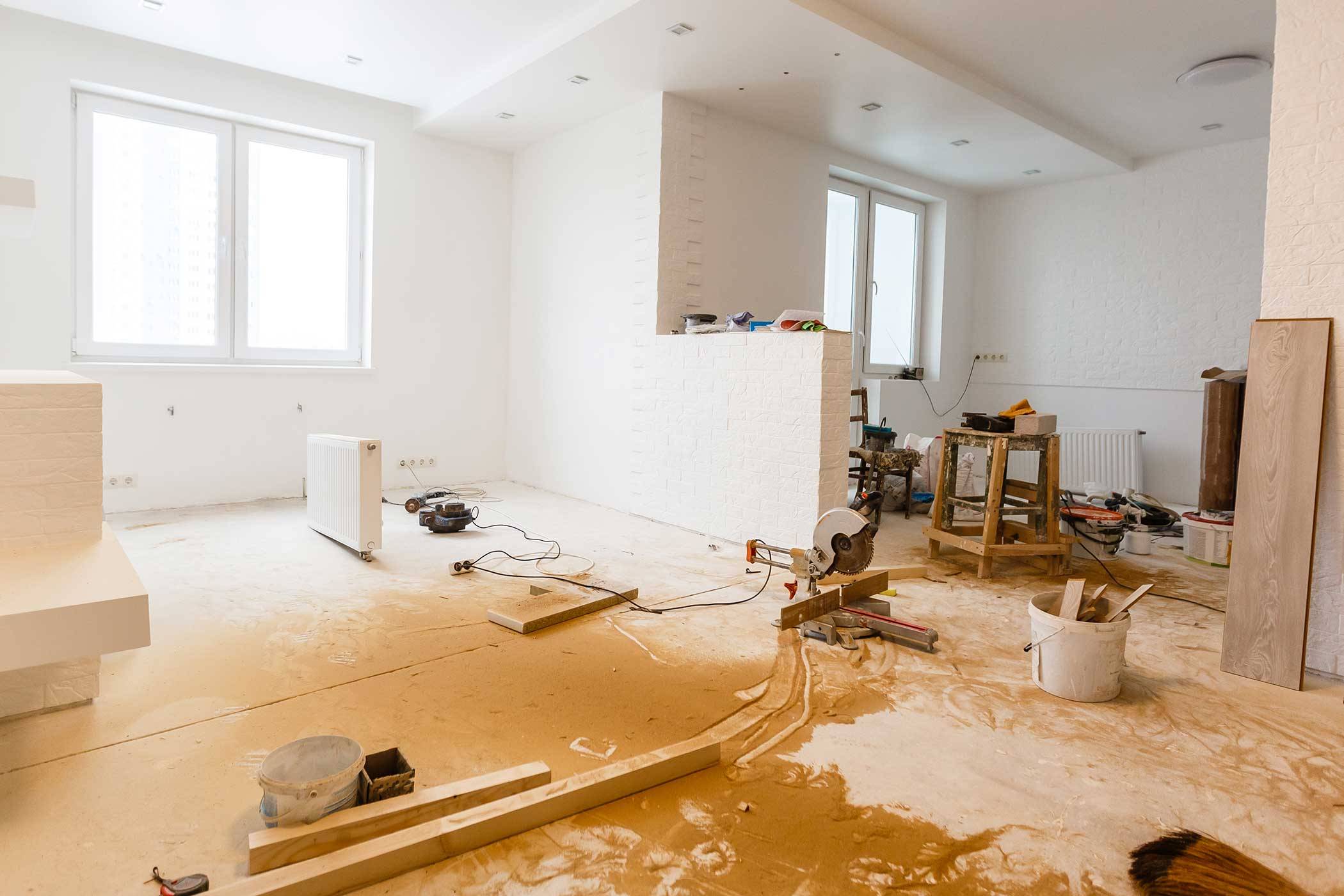
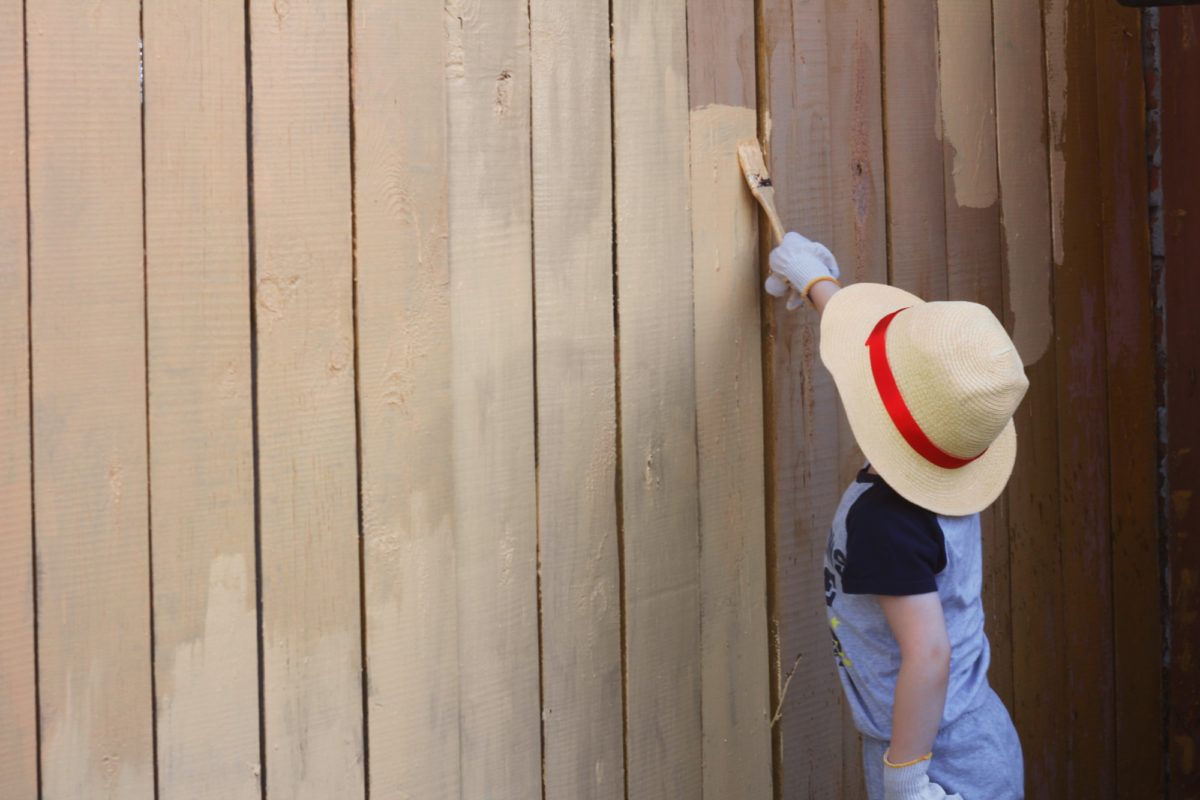

0 thoughts on “How To Plan A Home Renovation”